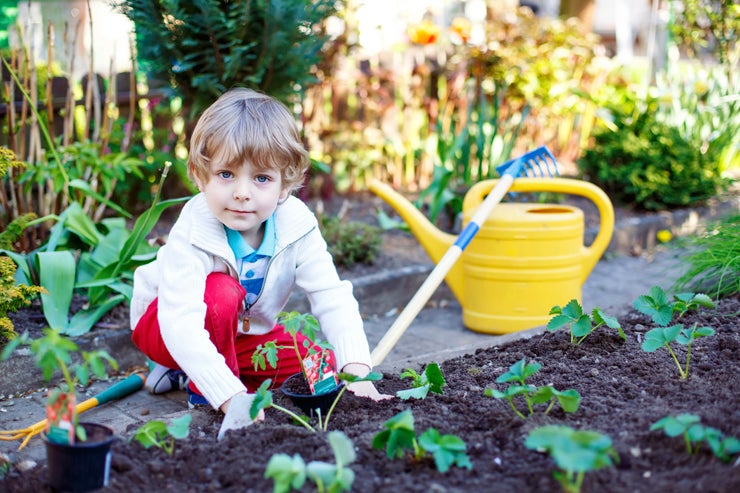How To Teach Kids In Gardening
Gardening is a fun outdoor activity you can share with your child. Check out our tips to help your child learn about gardening.
British horticulturist and garden writer Gertrude Jekyll said, “A garden is a grand teacher. It teaches patience and careful watchfulness; it teaches industry and thrift; above all it teaches entire trust.” These are lofty character traits—ones we want our children to gain. Teaching kids to garden also encourages an attitude of conservation and respect for nature. Perhaps most importantly, though, gardening with children is downright fun. Children are natural explorers who find joy in the simple pleasures of planting seeds or searching for earthworms. Gardening doesn’t have to be expensive, complicated, or time-consuming. With just a few minutes per week, you can grow a simple garden project with your child. Below are a few ideas to get you started:
TIPS FOR TEACHING KIDS HOW TO GARDEN
- Start small. You don’t need a large yard to teach your child about gardening. In fact, small and simple is generally better because children are more likely to maintain interest and less likely to become overwhelmed. Plant beans or sunflowers in cups placed in a sunny window. Grow a tomato plant in a pot on your patio. Or plant a window box with herbs. Use simple projects like these to teach your child about gardening basics, such as healthy soil, sunlight, and water. As your child gains experience and interest, you can graduate to a small vegetable or flower garden.
- Choose high-interest plants. Let your child help decide which plants to grow, based on his or her interests. Cherry tomatoes make a tasty snack and generally produce fruit earlier than larger tomatoes. Leaf crops, such as lettuce and spinach, grow quickly and can be harvested more than once. Radishes, peas, and carrots can be planted in the spring for an early harvest. How about growing a giant pumpkin for carving or some gorgeous sugar pumpkins for pies? If your child has a yen for flowers, consider quick-blooming annuals, such as snapdragons, marigolds, or petunias.
- Use the right tools. Every gardener needs a set of high-quality tools and gardening gloves, and children are no exception. Give your budding green thumb a child-size shovel and hoe, along with a durable pair of gloves.
- Cultivate good habits. Like many things in life, gardening success has as much to do with consistency as with luck or skill. Teach your child to store the tools away after use. Set aside 15 to 20 minutes once or twice a week to tend the garden. Show your child how to pull weeds and water the garden. These experiences offer bite-size lessons in responsibility and organization.
- Eat the fruits of your labors. Children get firsthand experience of the food cycle when the plants they grew appear on your dinner table. Have your child help in the kitchen by preparing and cooking a tasty meal. Make Margherita pizza with tomatoes and basil. Scrub carrots for a quick snack. Slice strawberries for your breakfast cereal. Better yet, invite friends to join the feast or give your surplus vegetables to a food bank.
- Visit a farm or farmer’s market. Through gardening at home, children begin to understand where their food comes from. A visit to a farm or farmer’s market helps them connect the dots even further and fosters an understanding of and appreciation for the earth and the farmers who work hard to bring us food.
SHIJINA RIJESH
